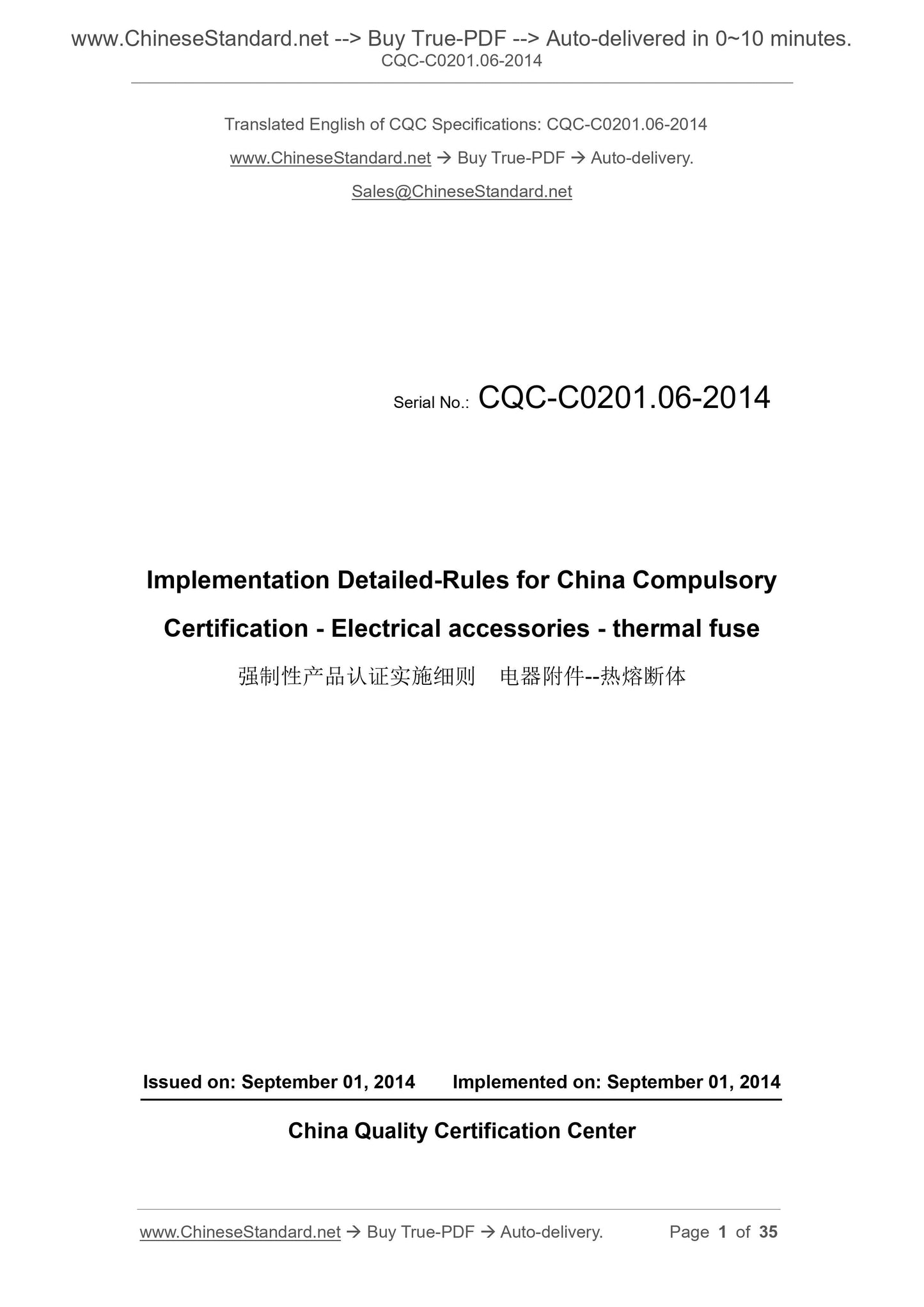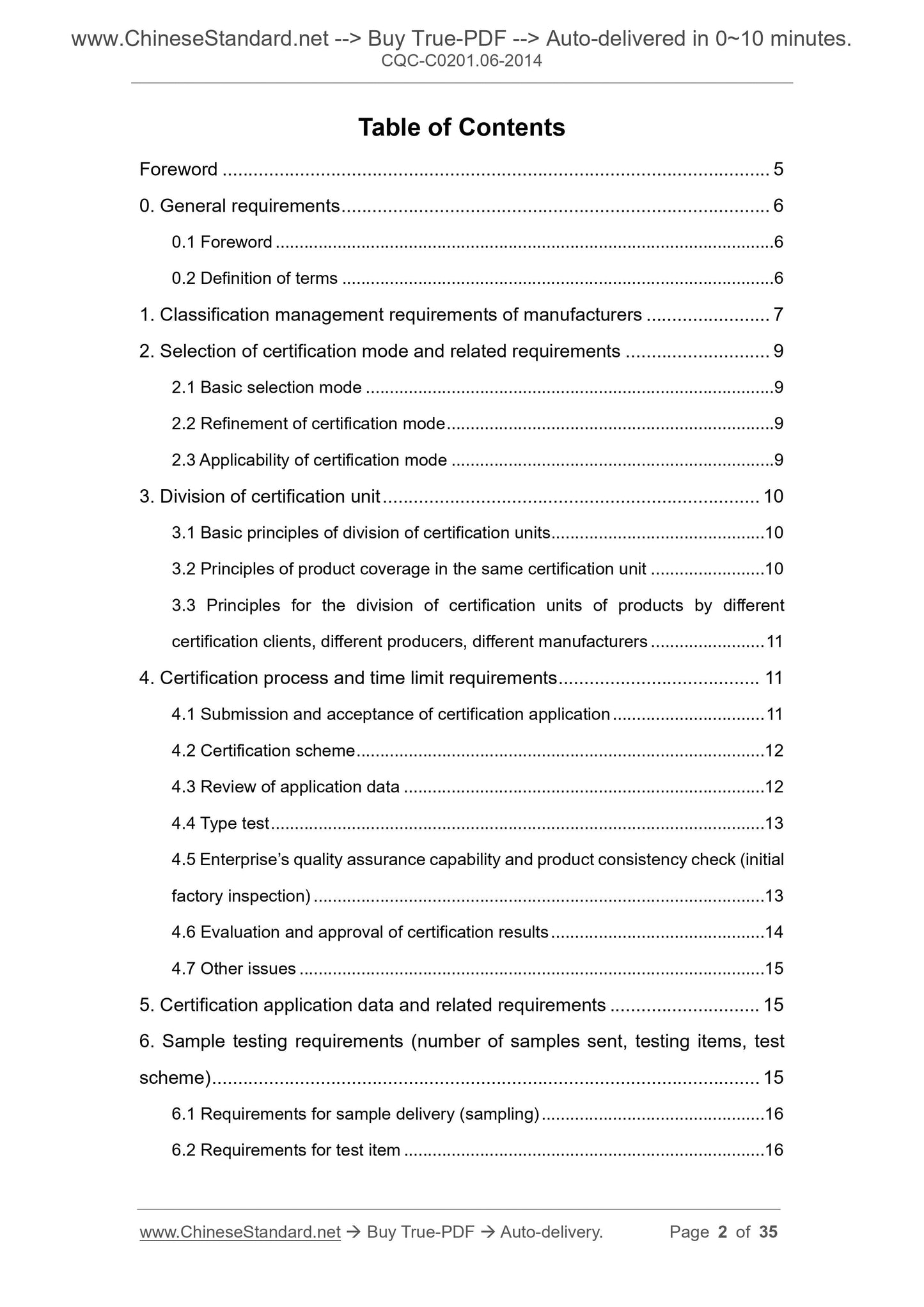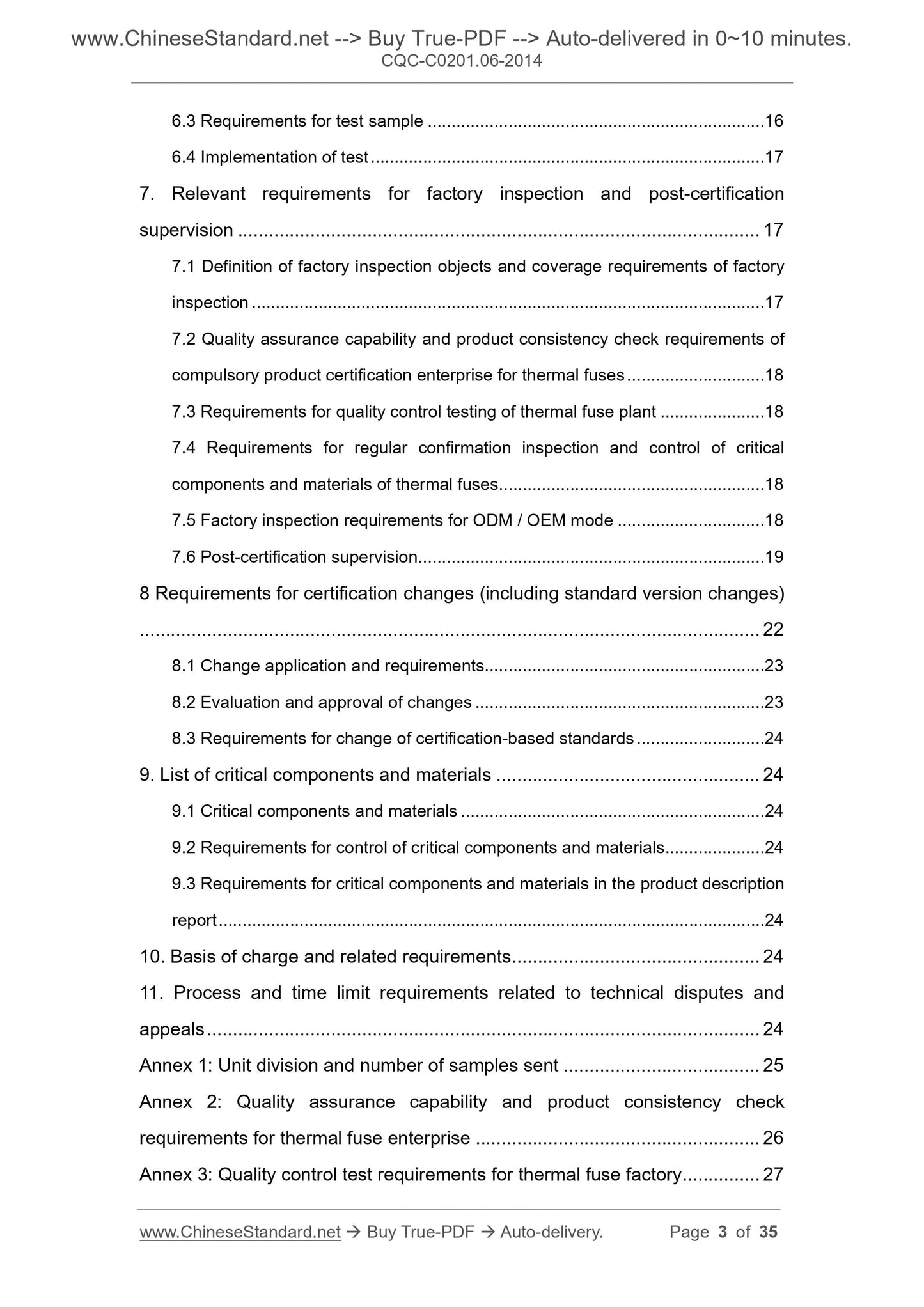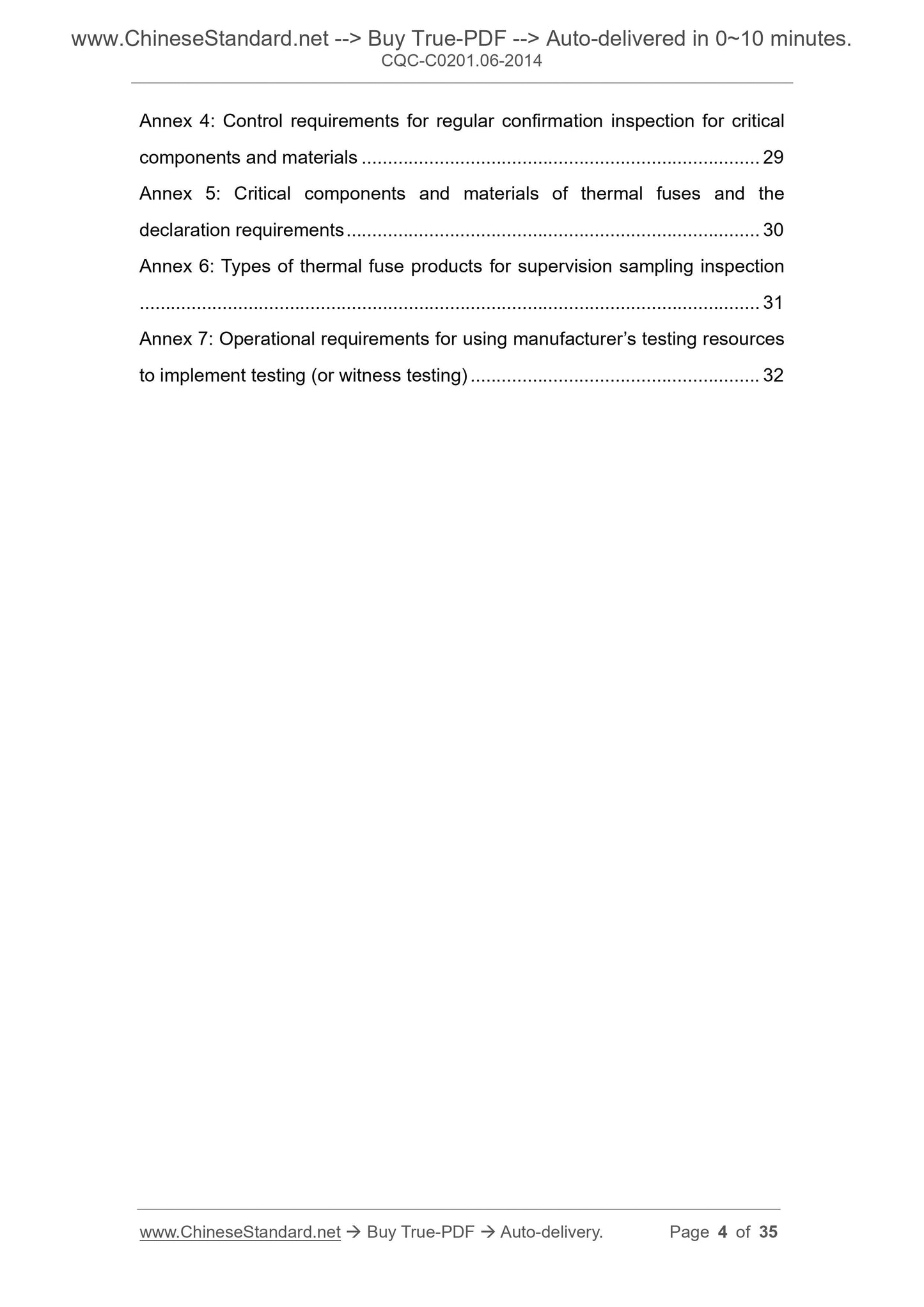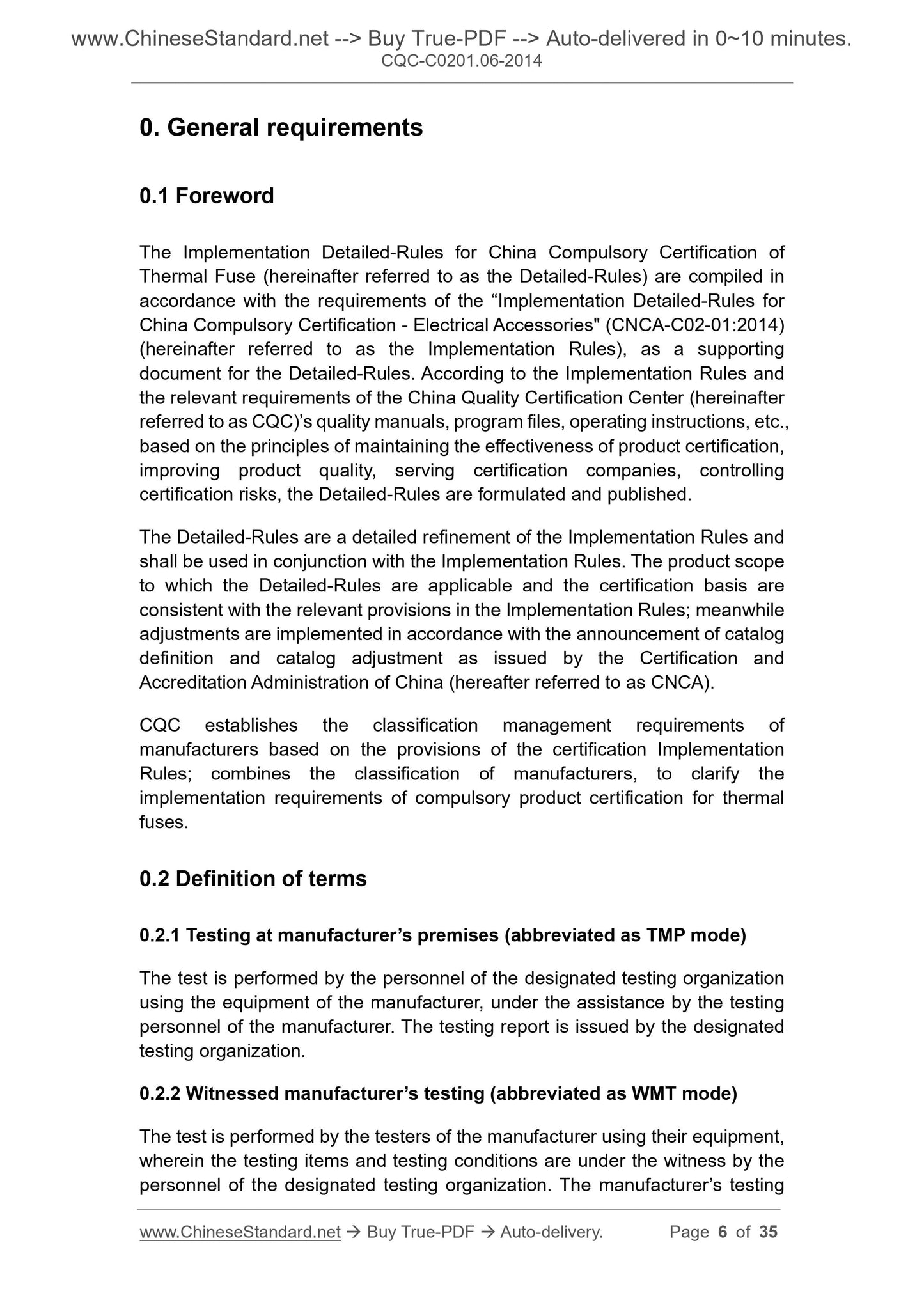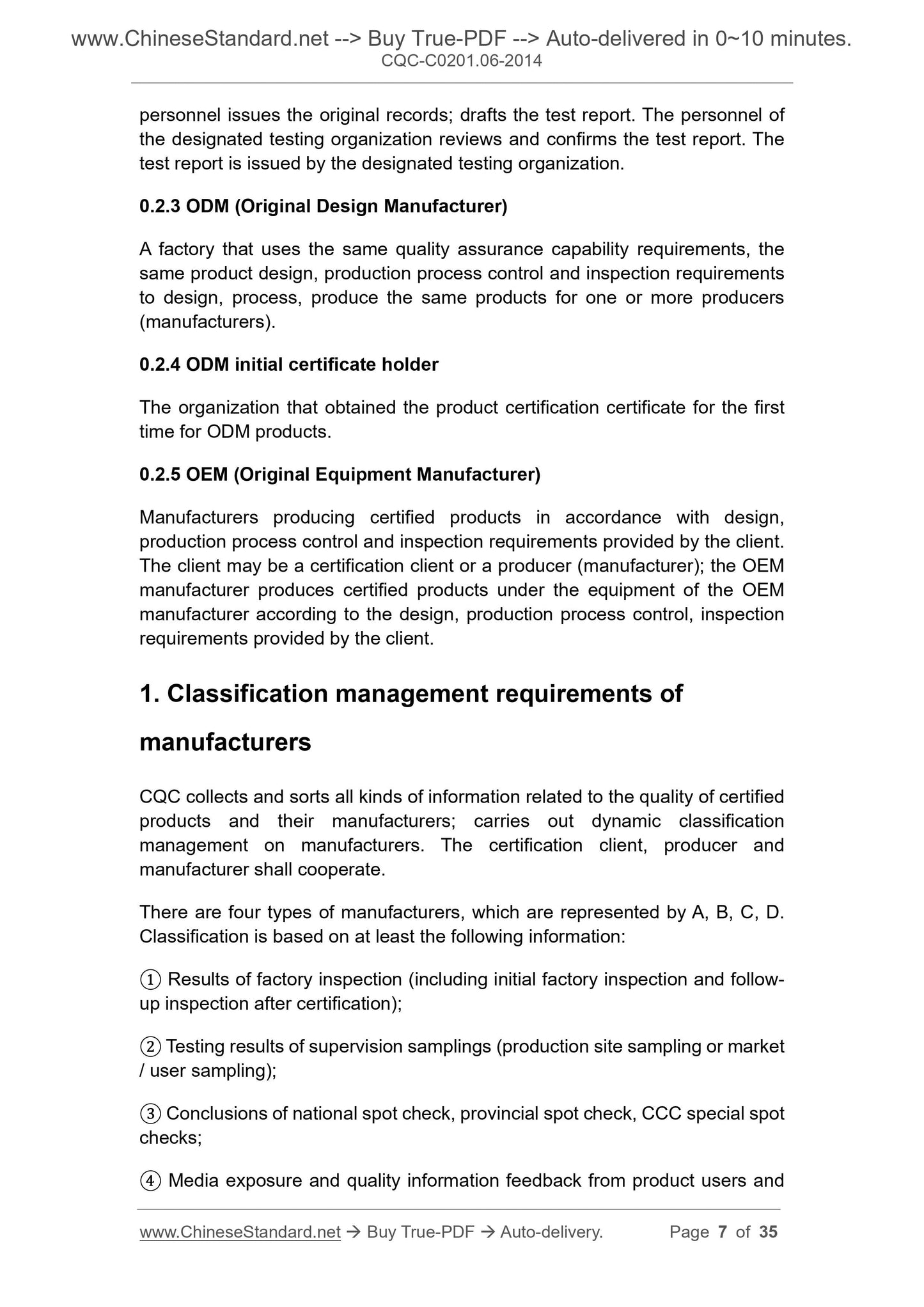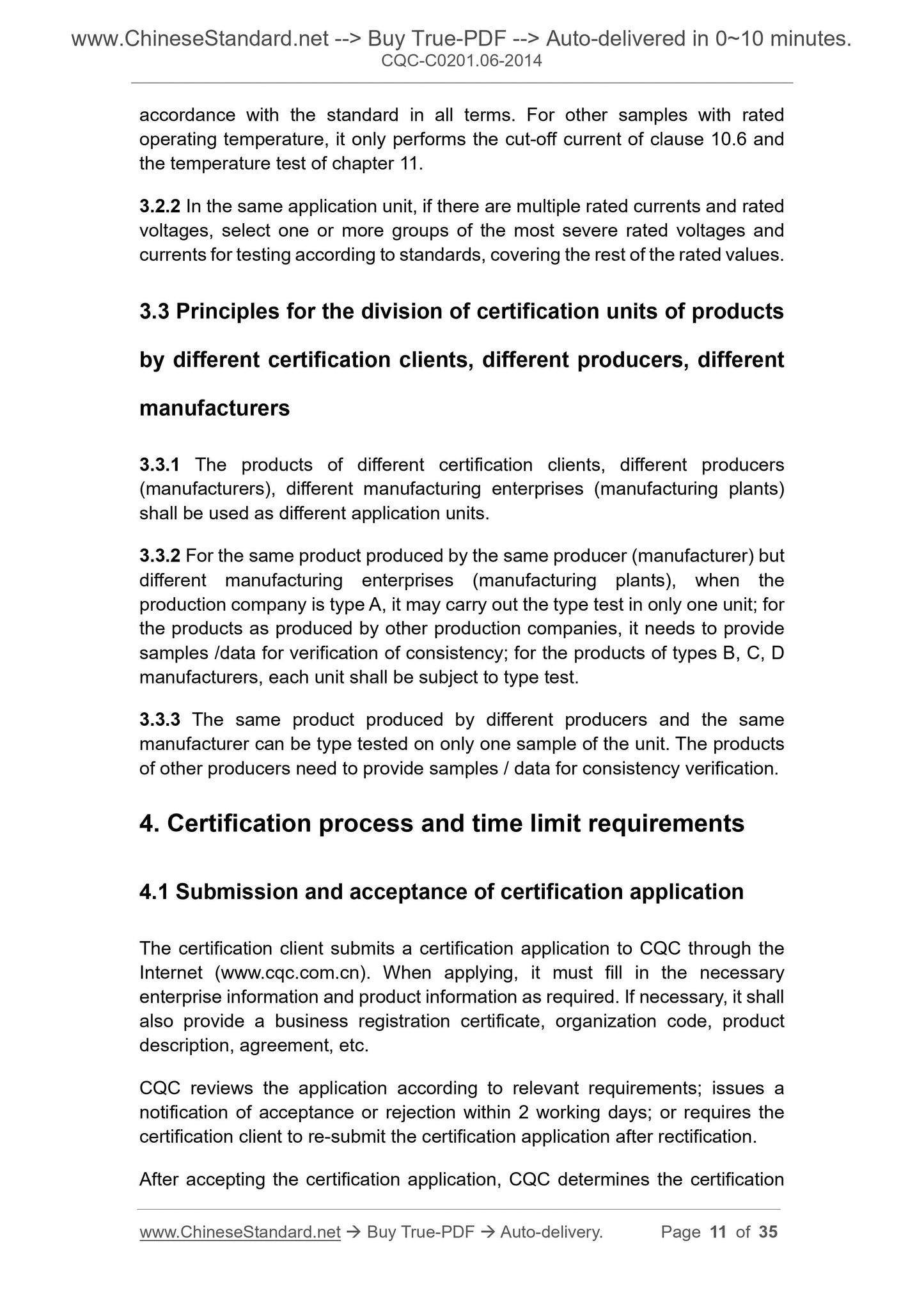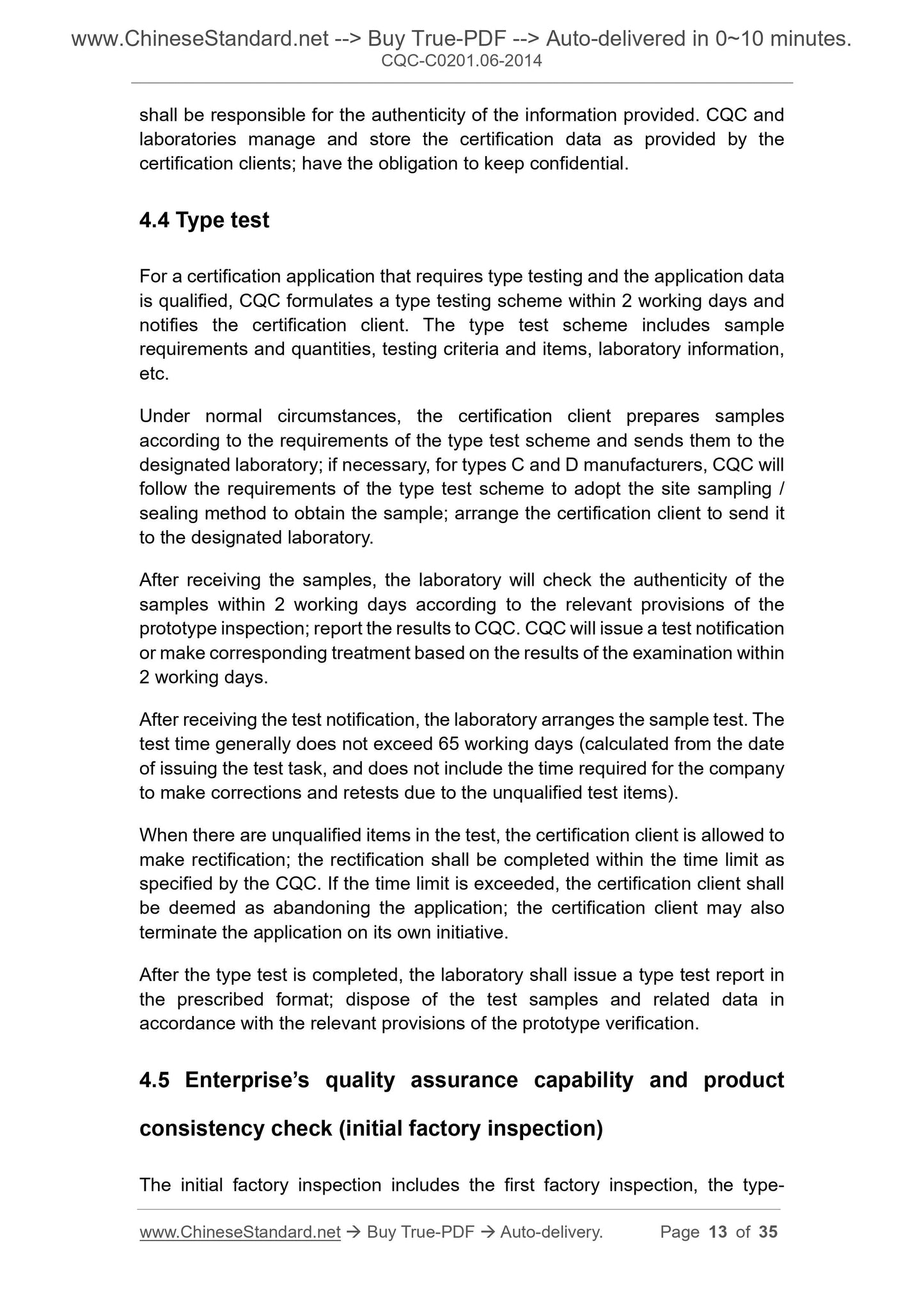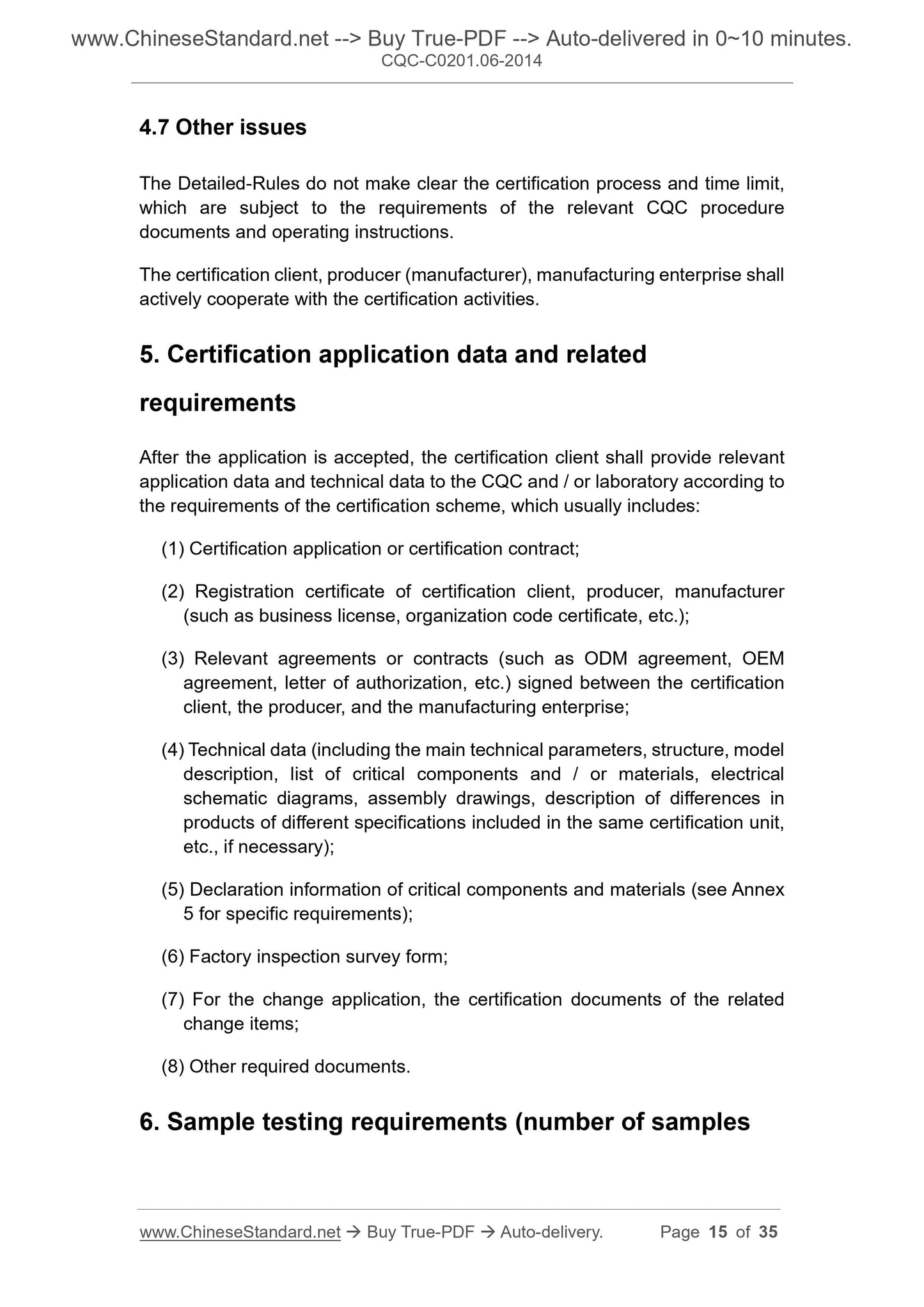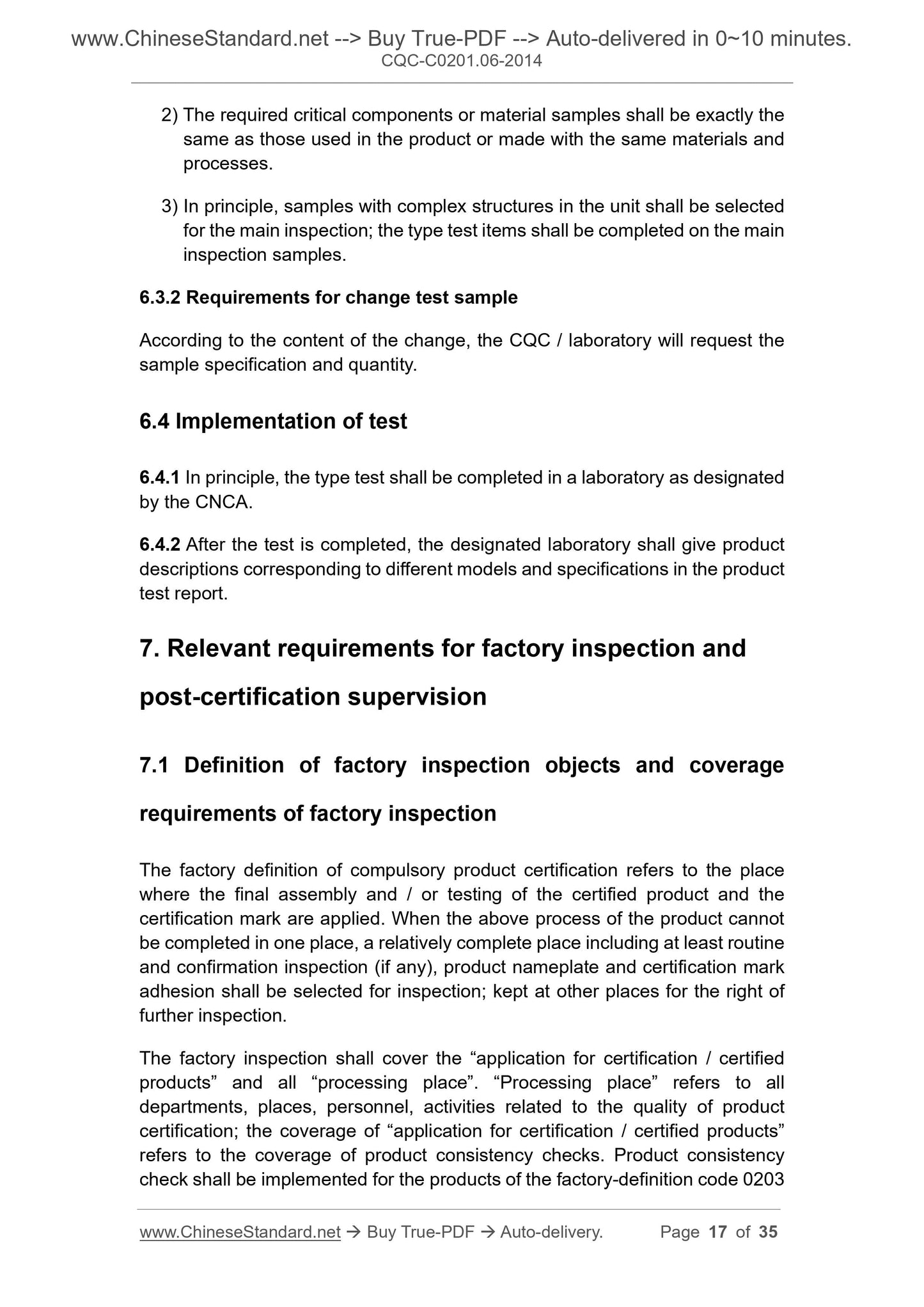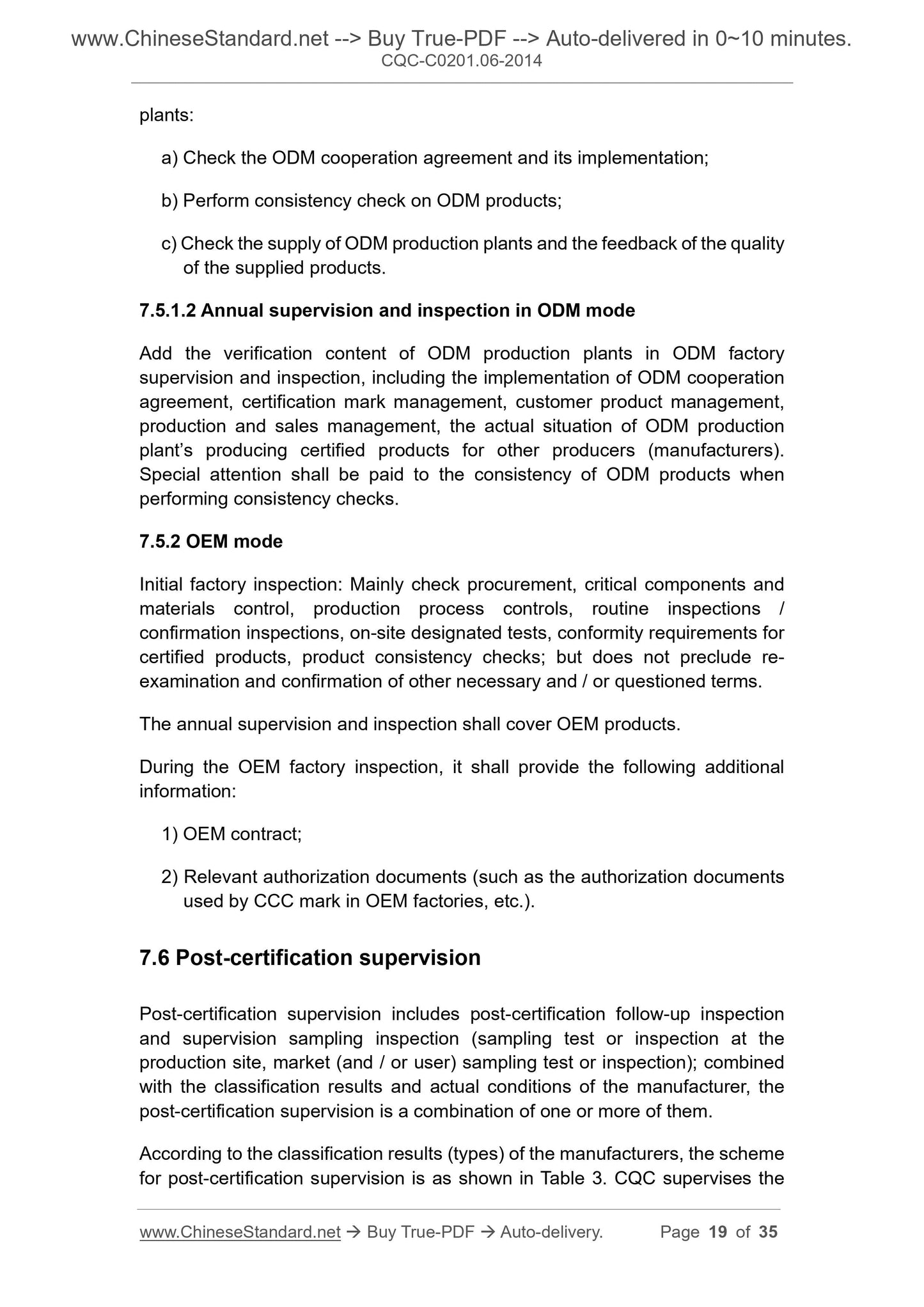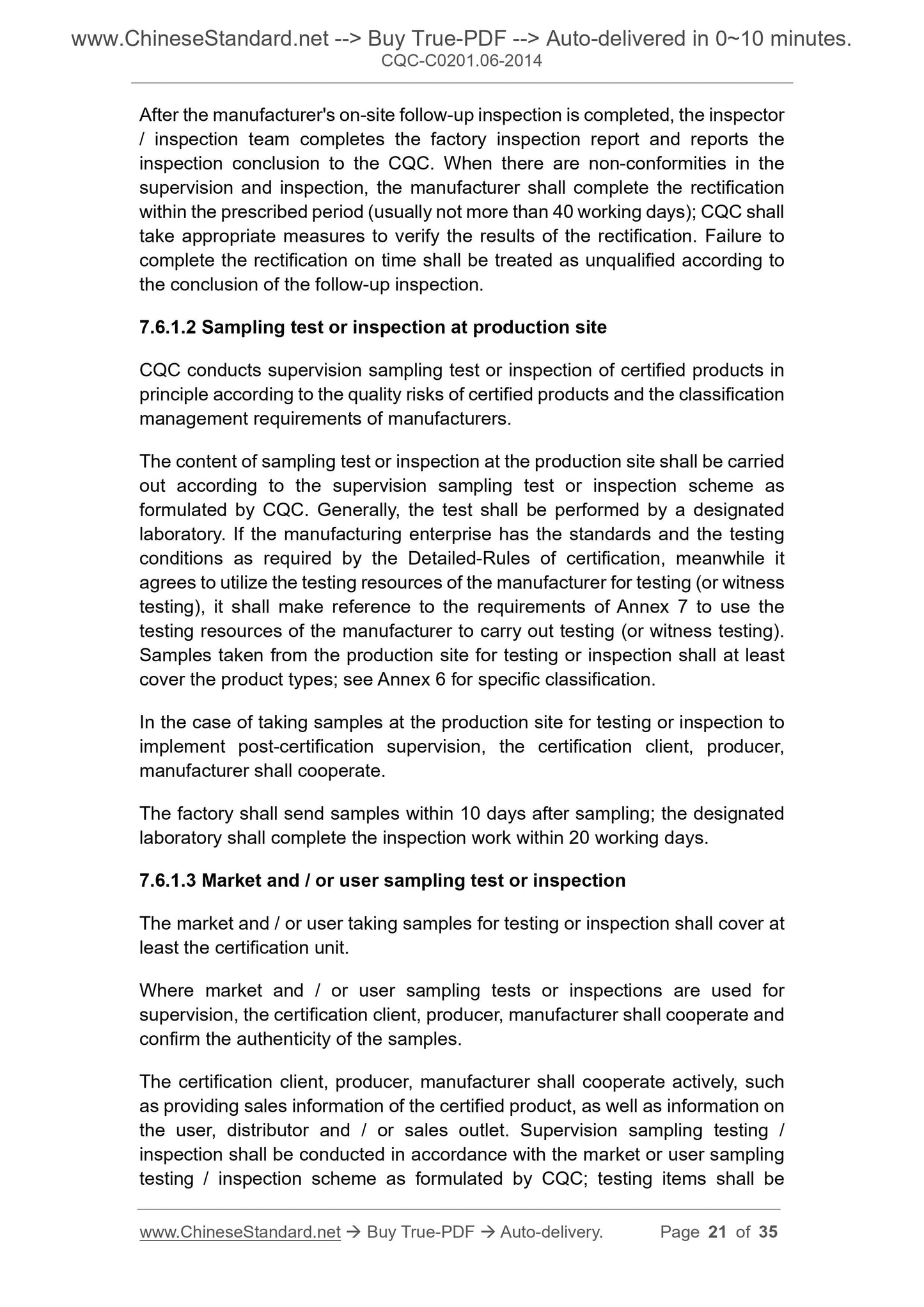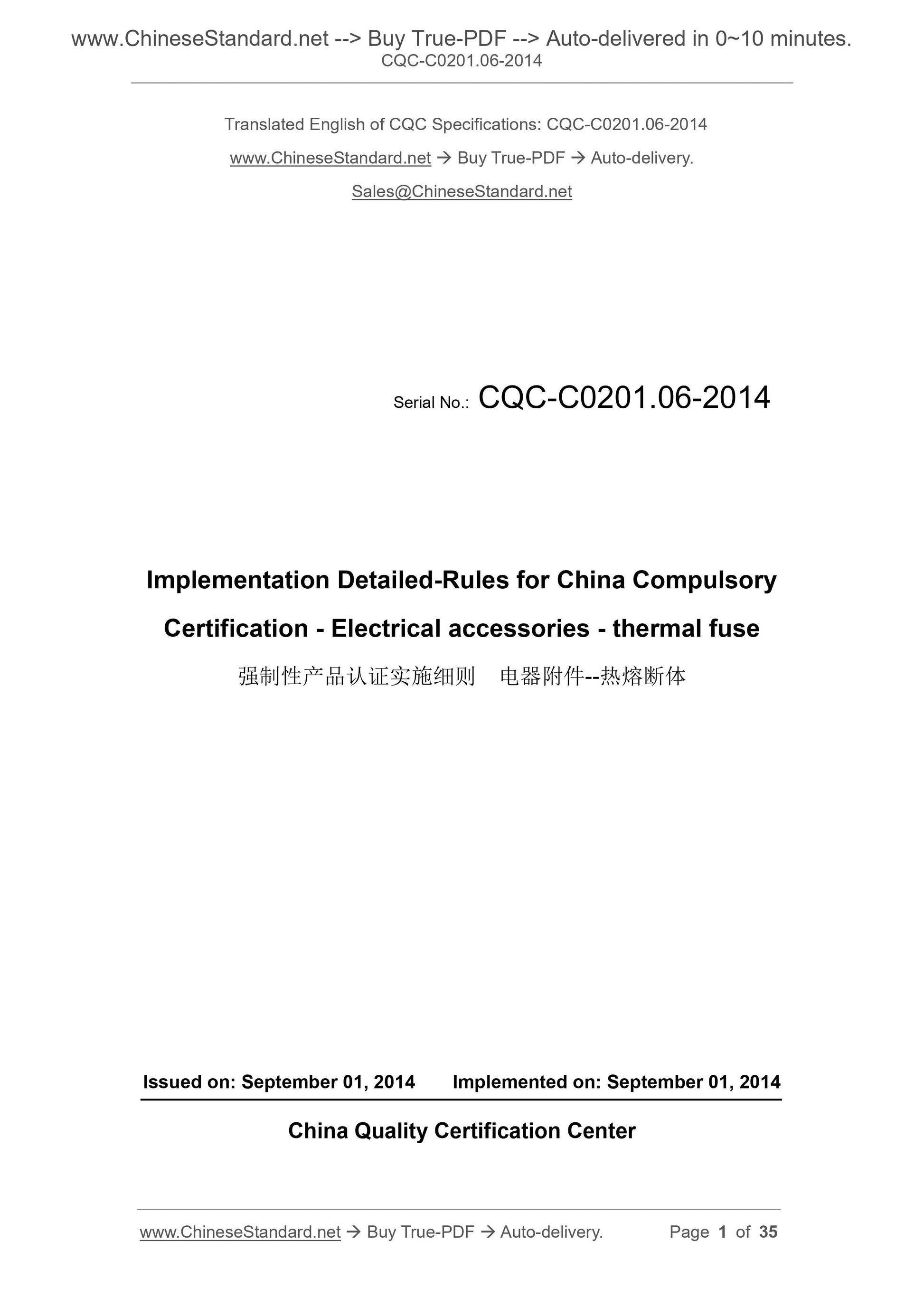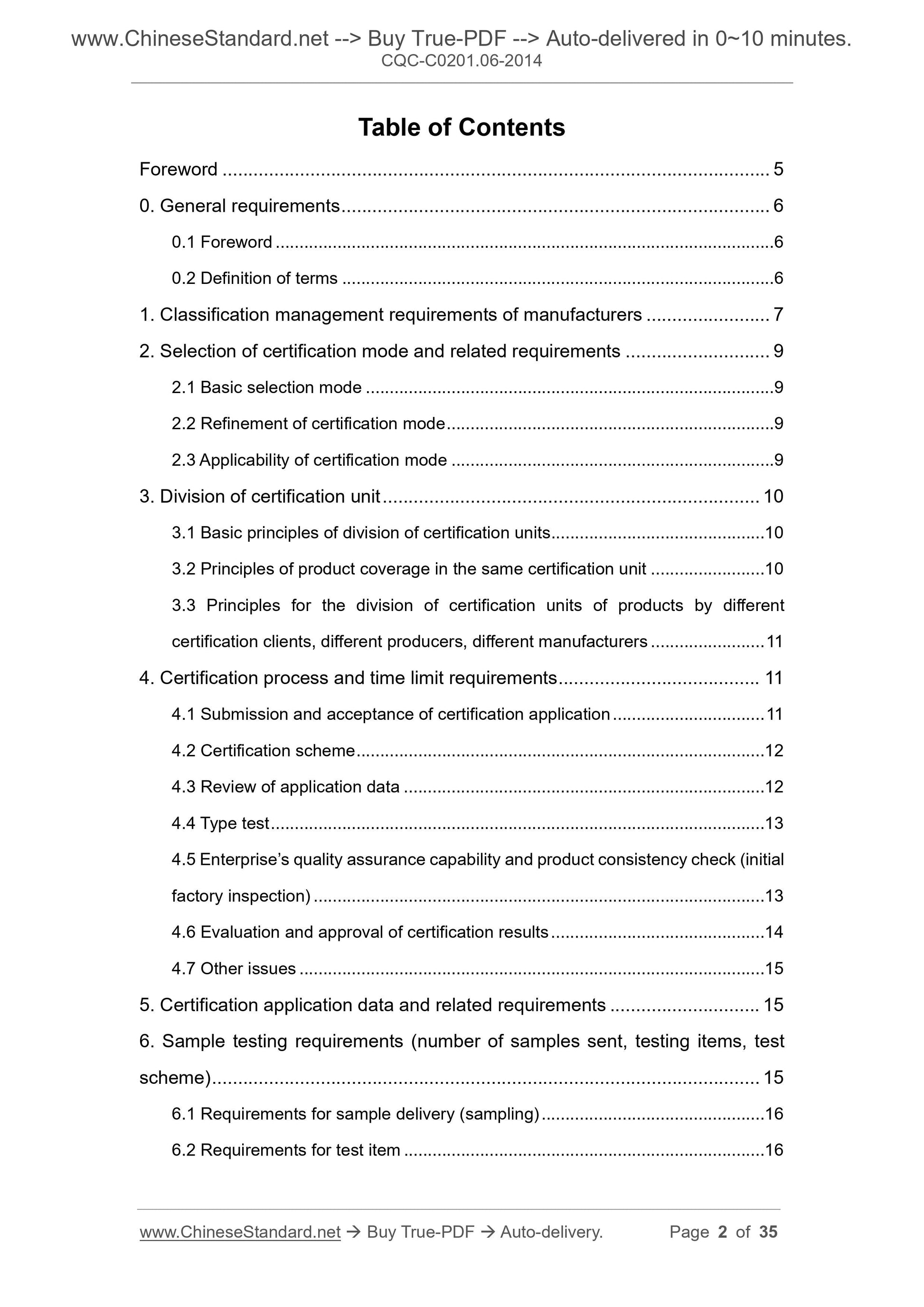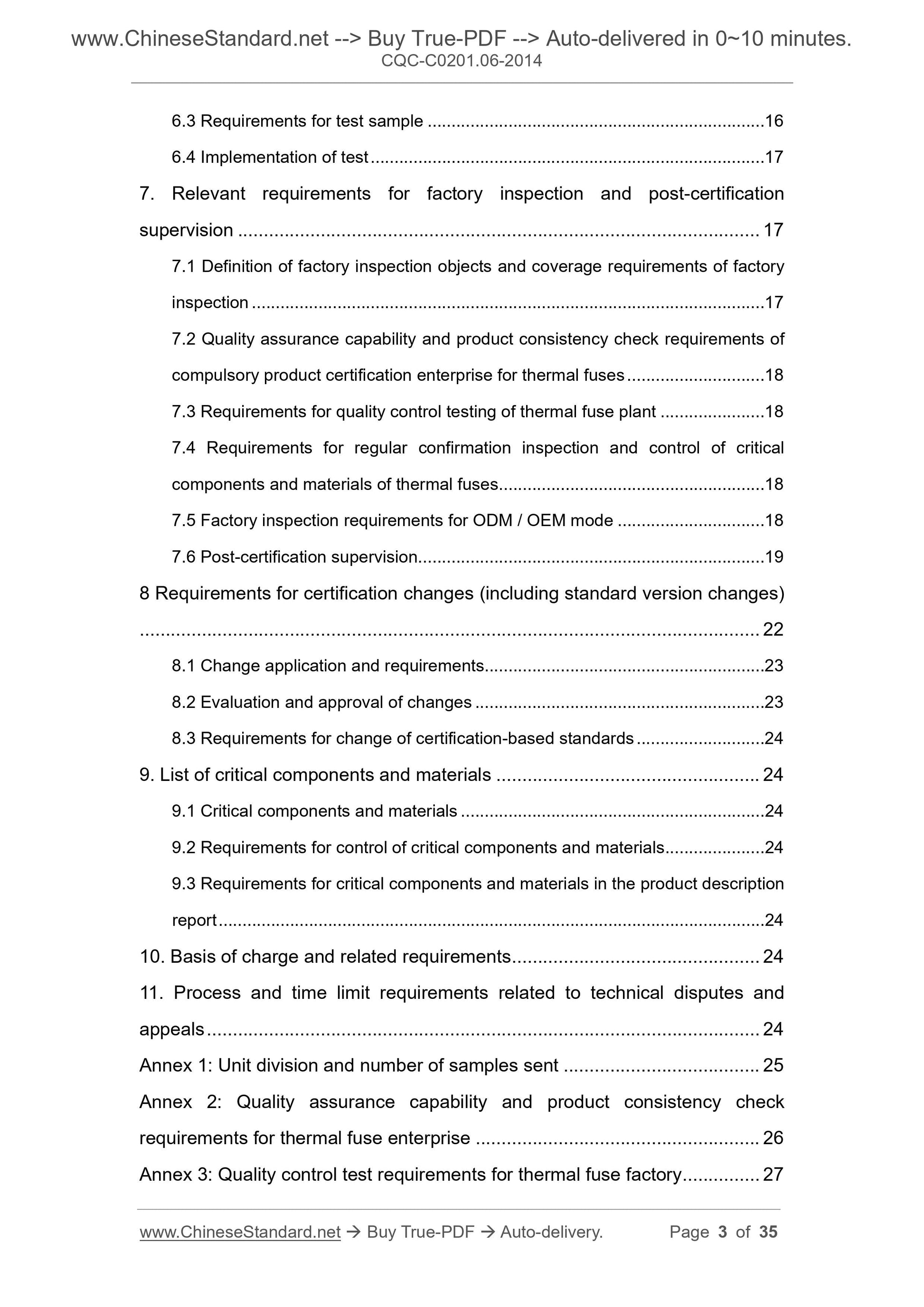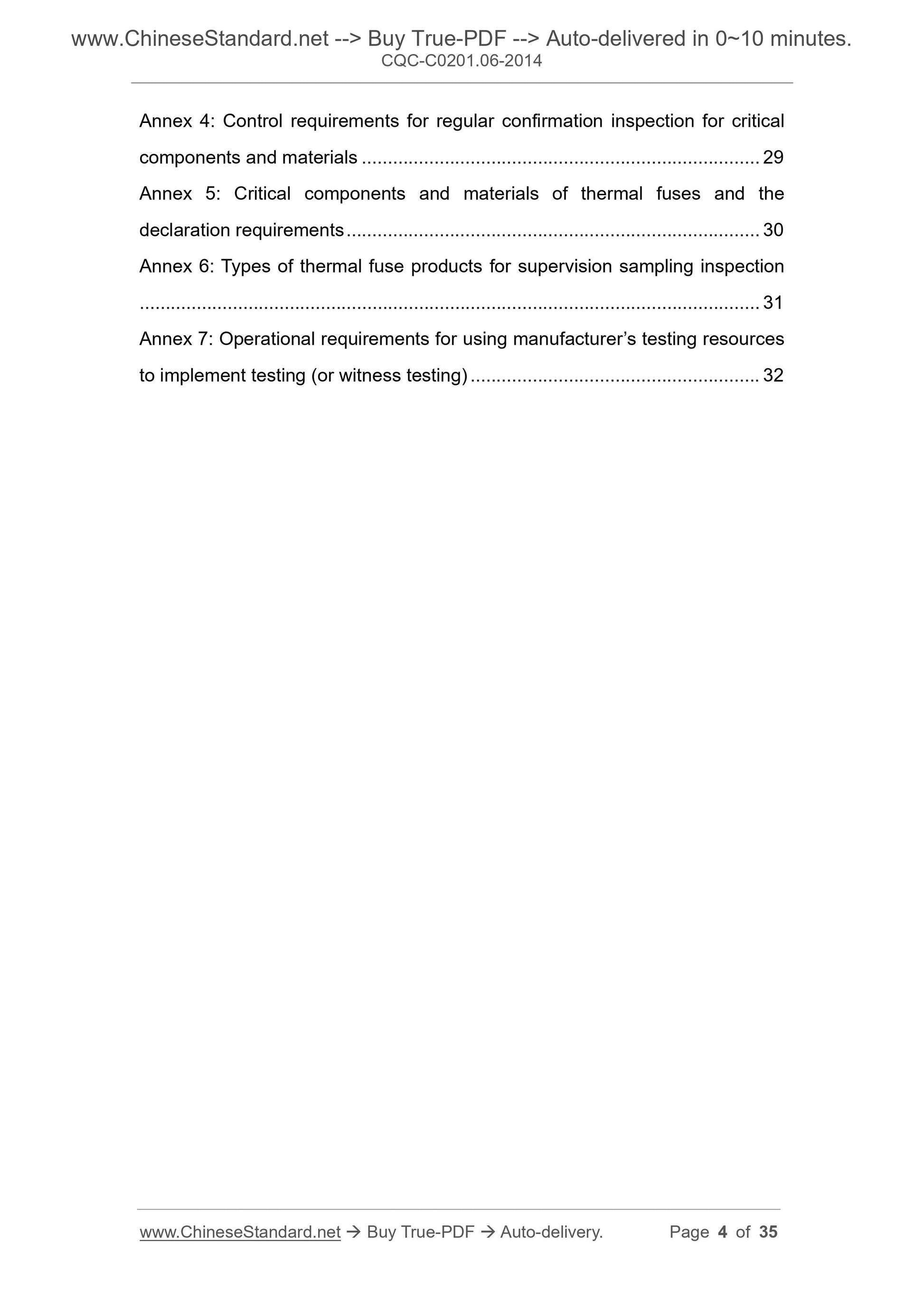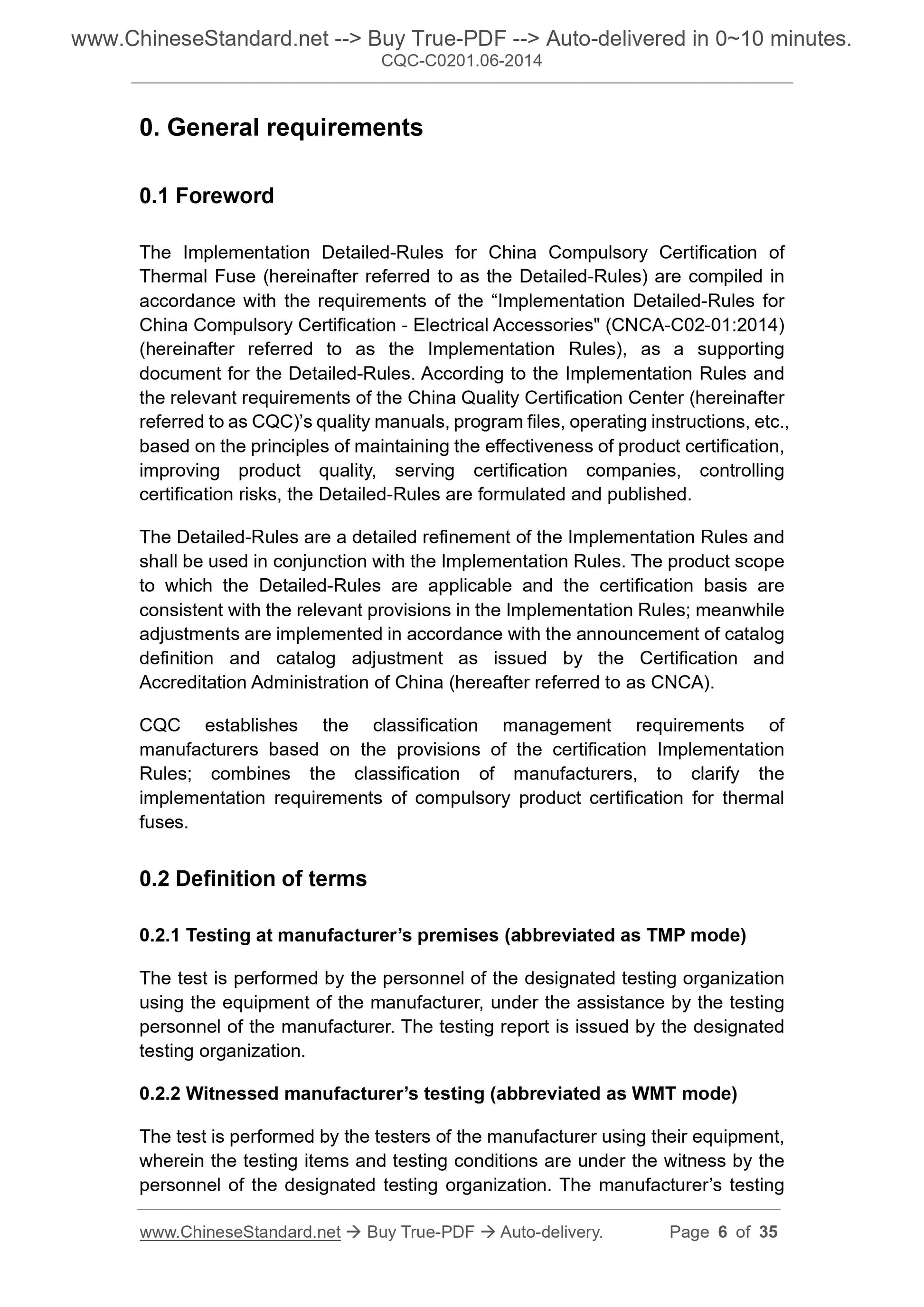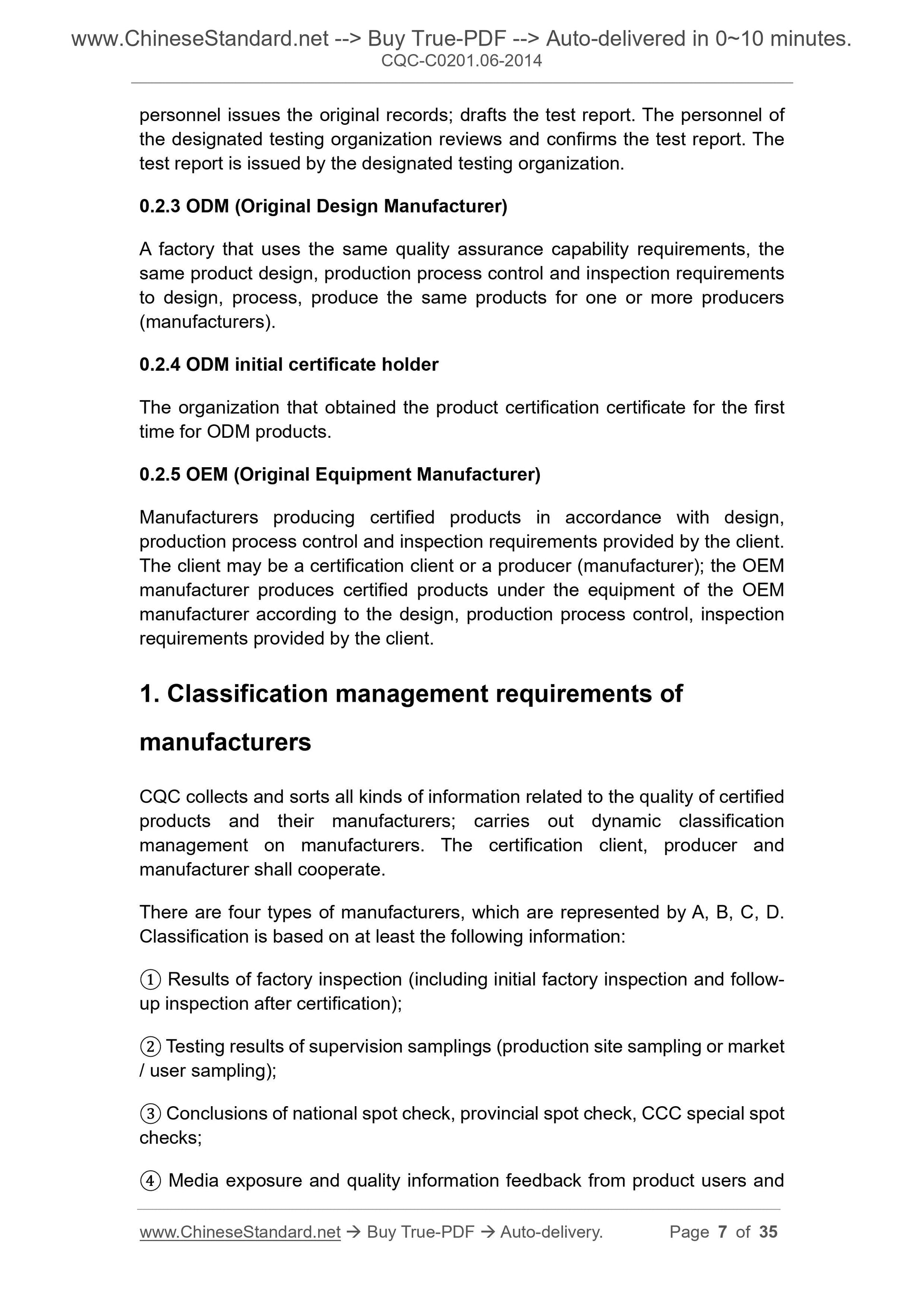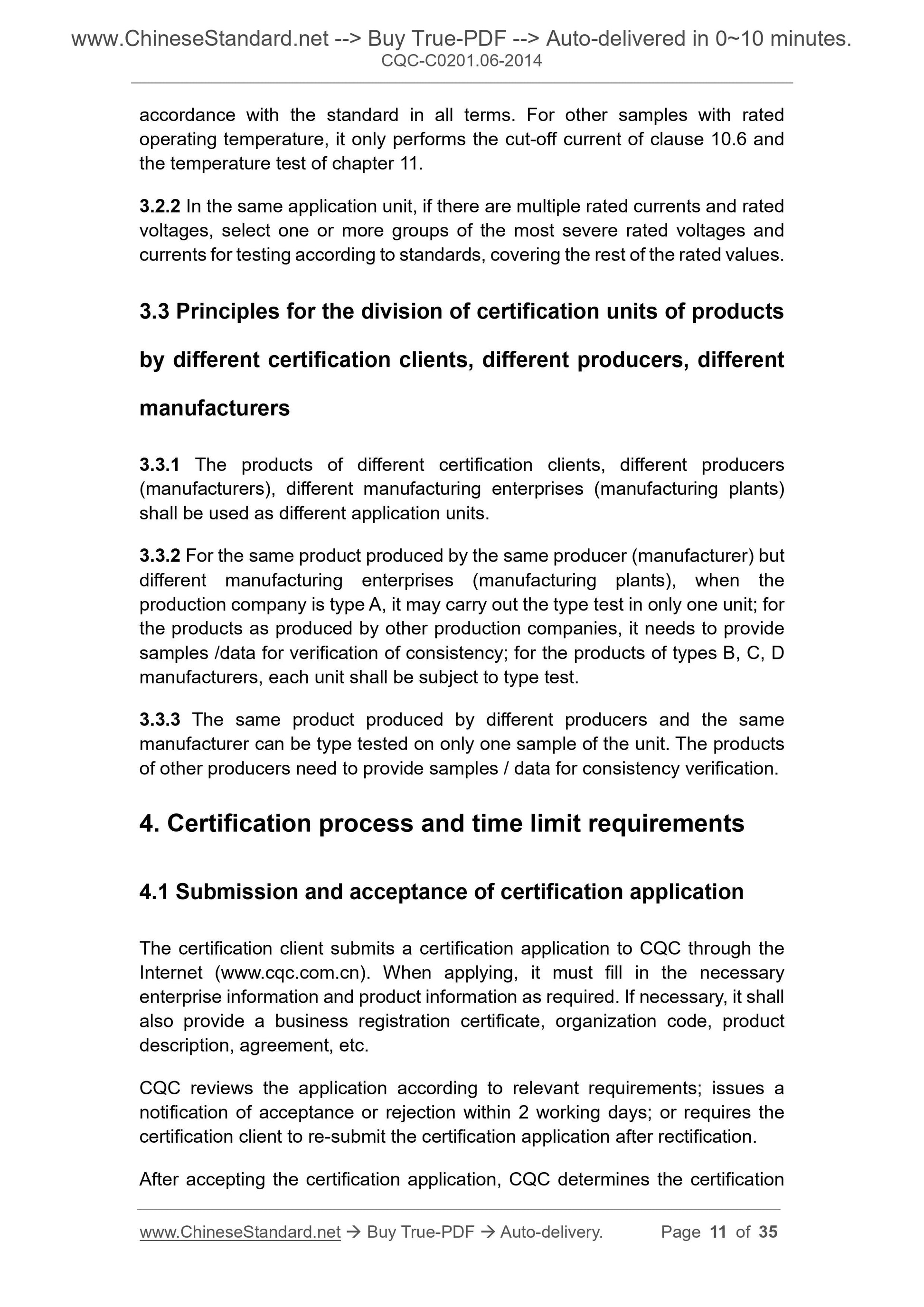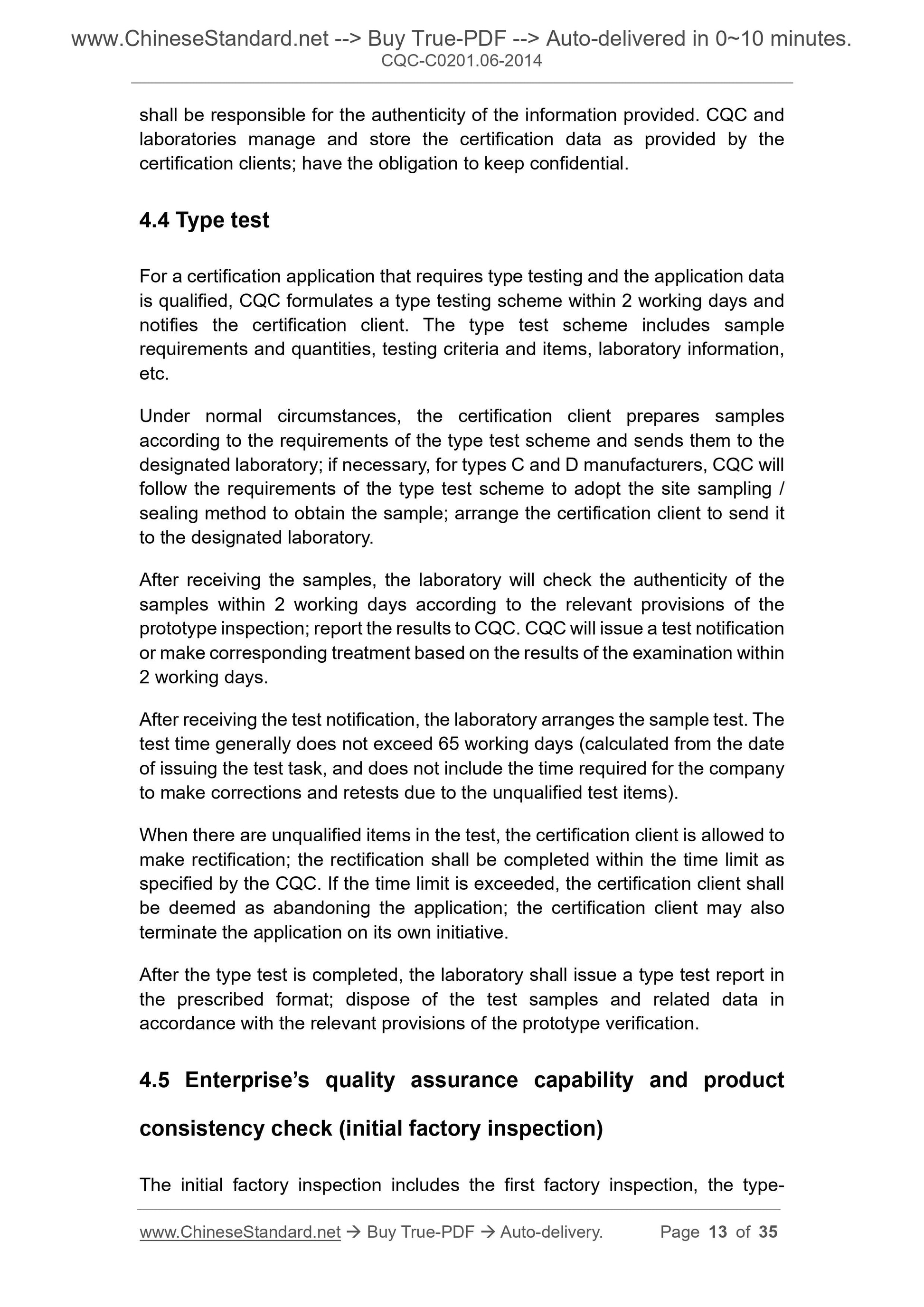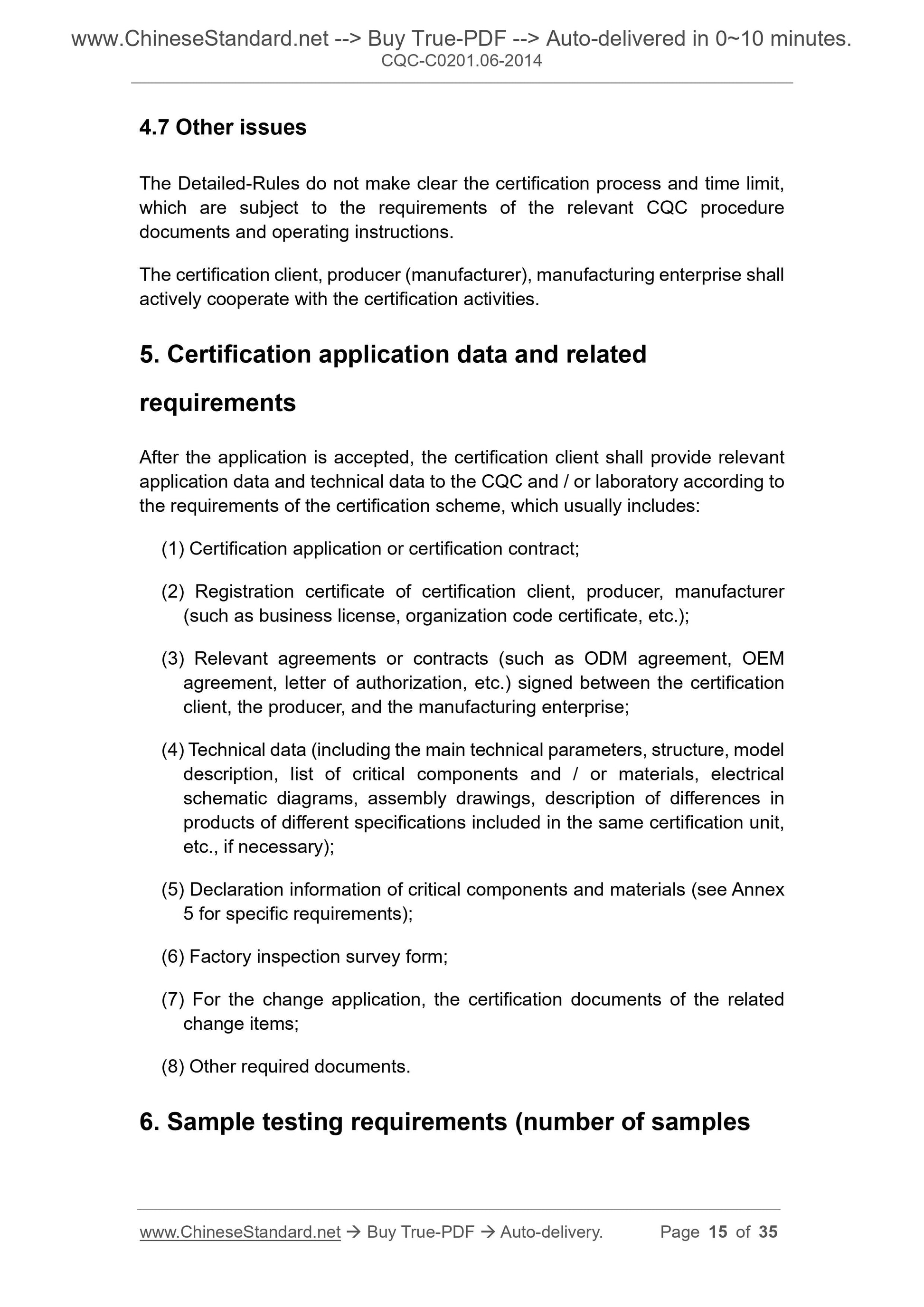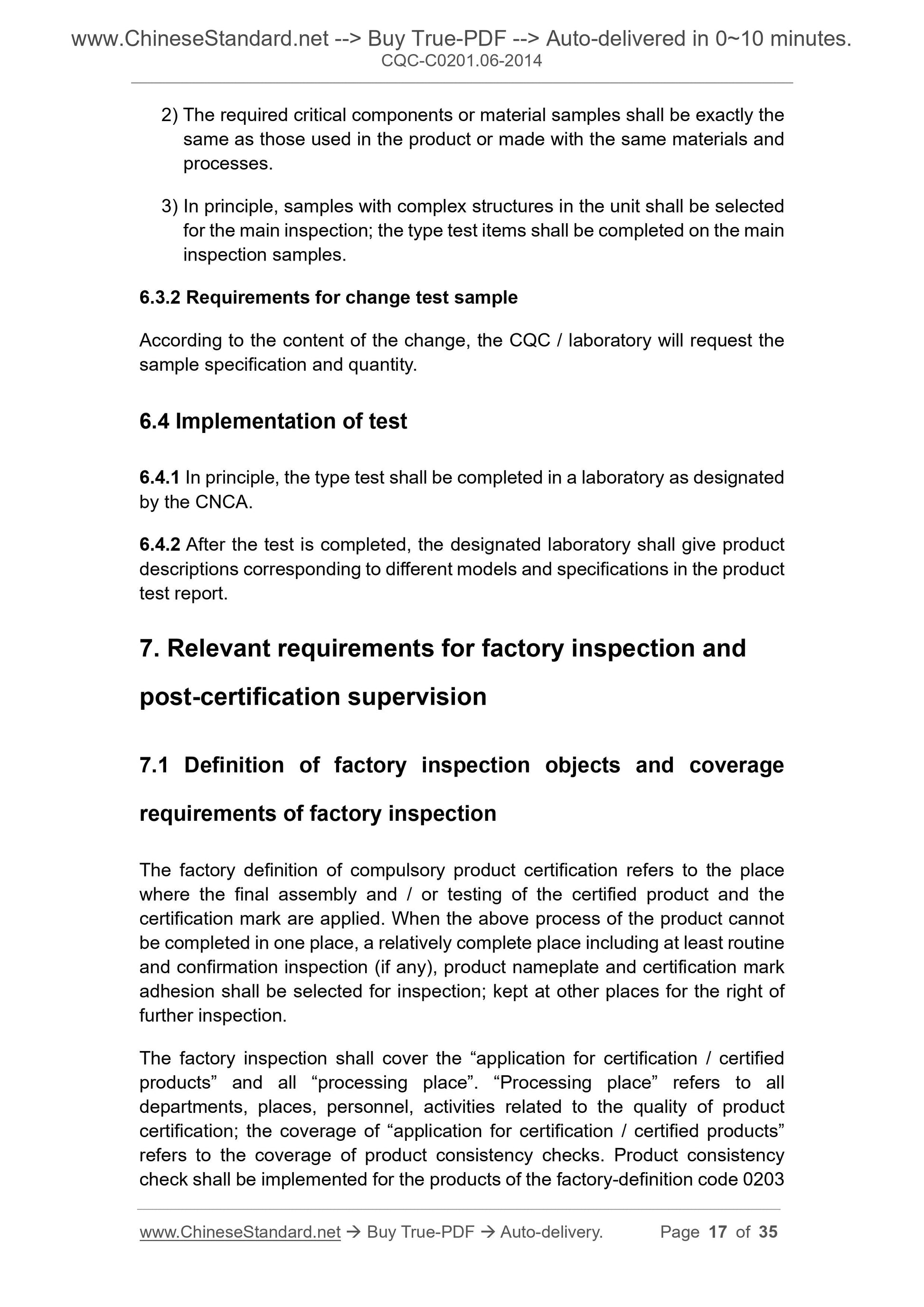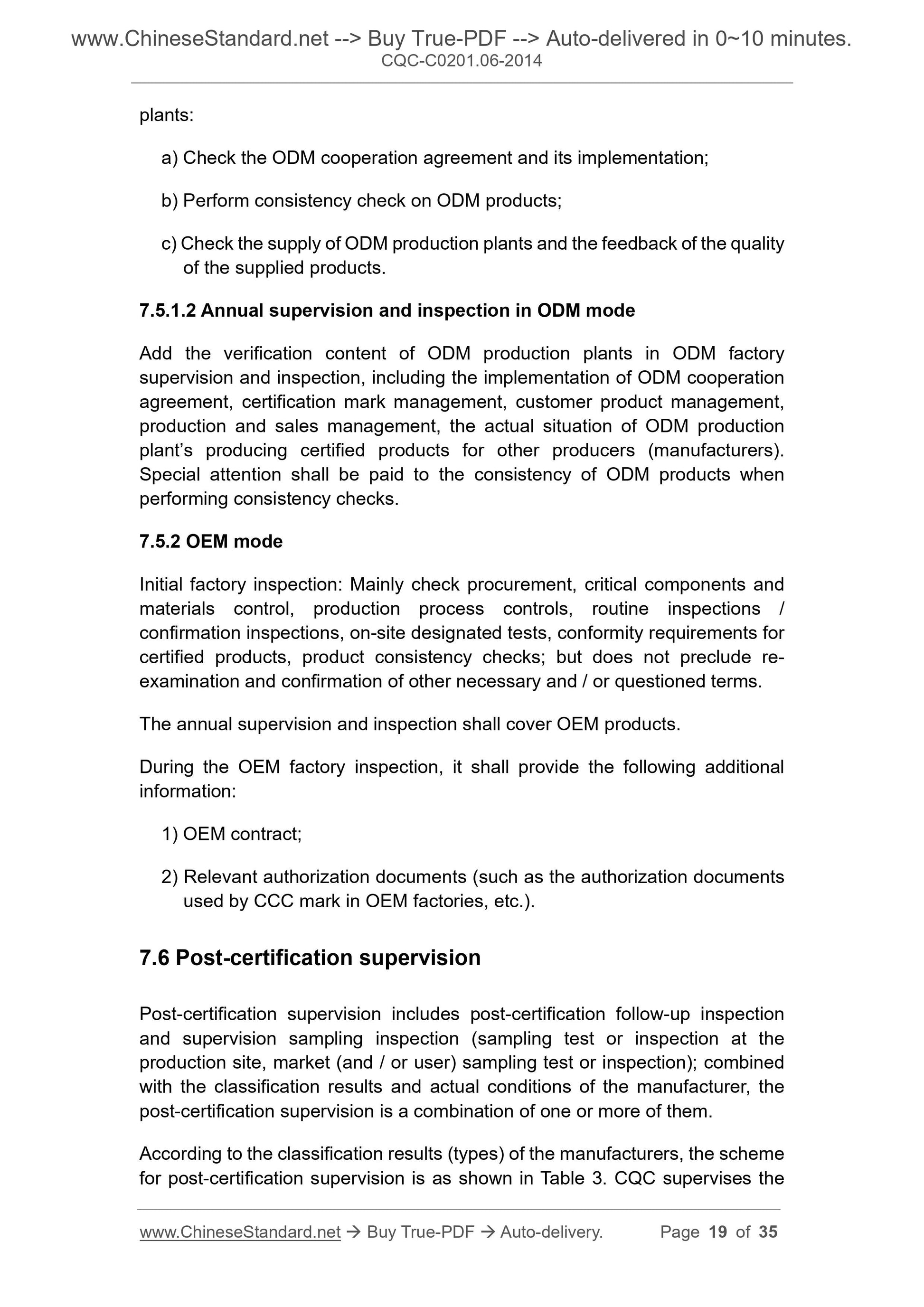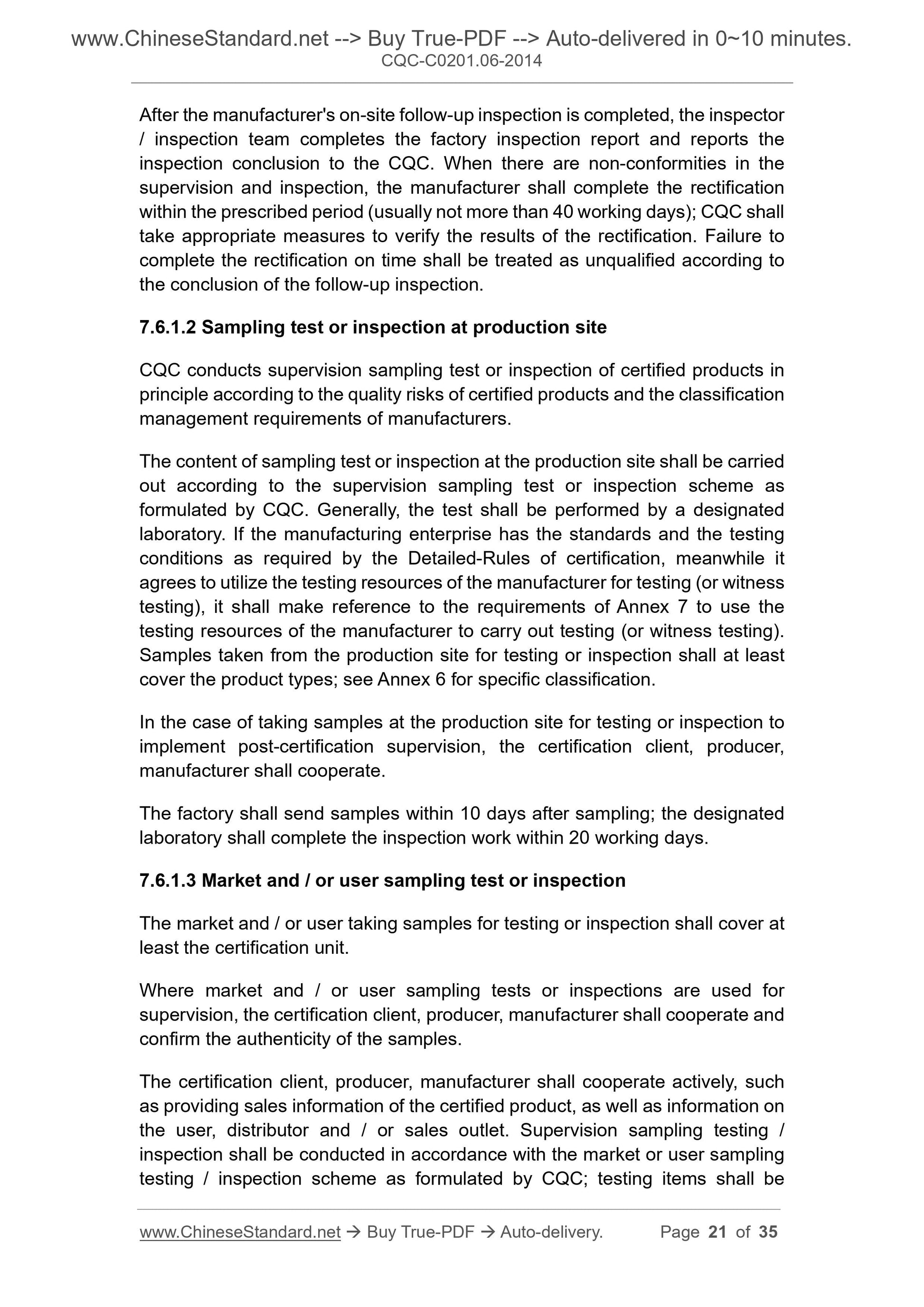1
/
of
12
www.ChineseStandard.us -- Field Test Asia Pte. Ltd.
CQC-C0201.06-2014 English PDF
CQC-C0201.06-2014 English PDF
Regular price
$450.00
Regular price
Sale price
$450.00
Unit price
/
per
Shipping calculated at checkout.
Couldn't load pickup availability
CQC-C0201.06-2014: [2019-Edition, 2020-Enforced] China Compulsory Certification Implementation Detailed-Rules - Electrical accessories - thermal fuse - heat
Delivery: 9 seconds. Download (and Email) true-PDF + Invoice.Get Quotation: Click CQC-C0201.06-2014 (Self-service in 1-minute)
Newer / historical versions: CQC-C0201.06-2014
Preview True-PDF
Scope
manufacturersCQC collects and sorts all kinds of information related to the quality of certified
products and their manufacturers; carries out dynamic classification
management on manufacturers. The certification client, producer and
manufacturer shall cooperate.
There are four types of manufacturers, which are represented by A, B, C, D.
Classification is based on at least the following information:
Results of factory inspection (including initial factory inspection and follow-
up inspection after certification);
Testing results of supervision samplings (production site sampling or market
/ user sampling);
Conclusions of national spot check, provincial spot check, CCC special spot
checks;
Media exposure and quality information feedback from product users and
accordance with the standard in all terms. For other samples with rated
operating temperature, it only performs the cut-off current of clause 10.6 and
the temperature test of chapter 11.
3.2.2 In the same application unit, if there are multiple rated currents and rated
voltages, select one or more groups of the most severe rated voltages and
currents for testing according to standards, covering the rest of the rated values.
3.3 Principles for the division of certification units of products
by different certification clients, different producers, different
manufacturers
3.3.1 The products of different certification clients, different producers
(manufacturers), different manufacturing enterprises (manufacturing plants)
shall be used as different application units.
3.3.2 For the same product produced by the same producer (manufacturer) but
different manufacturing enterprises (manufacturing plants), when the
production company is type A, it may carry out the type test in only one unit; for
the products as produced by other production companies, it needs to provide
samples /data for verification of consistency; for the products of types B, C, D
manufacturers, each unit shall be subject to type test.
3.3.3 The same product produced by different producers and the same
manufacturer can be type tested on only one sample of the unit. The products
of other producers need to provide samples / data for consistency verification.
Basic Data
| Standard ID | CQC-C0201.06-2014 (CQC C0201.06-2014; CQC-C02-01.06-2014; CQC-C0201.06-2014) |
| Description (Translated English) | [2019-Edition, 2020-Enforced] China Compulsory Certification Implementation Detailed-Rules - Electrical accessories - thermal fuse - heat |
| Sector / Industry | China Quality Certification Center - CCC Implementation Detailed-Rules |
| Classification of Chinese Standard | CQC |
| Word Count Estimation | 32,362 |
| Date of Issue | 9/1/2014 |
| Date of Implementation | 9/1/2014 |
| Issuing agency(ies) | China Quality Certification Center |
Share
